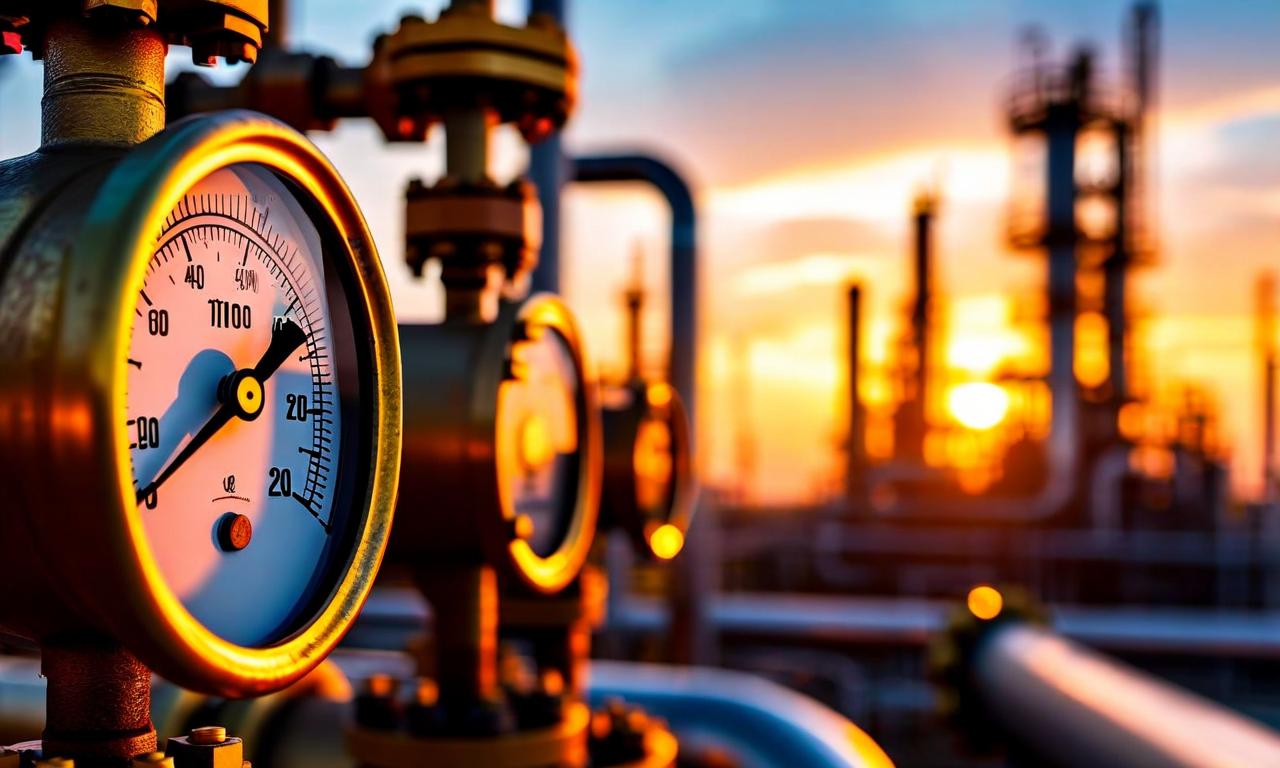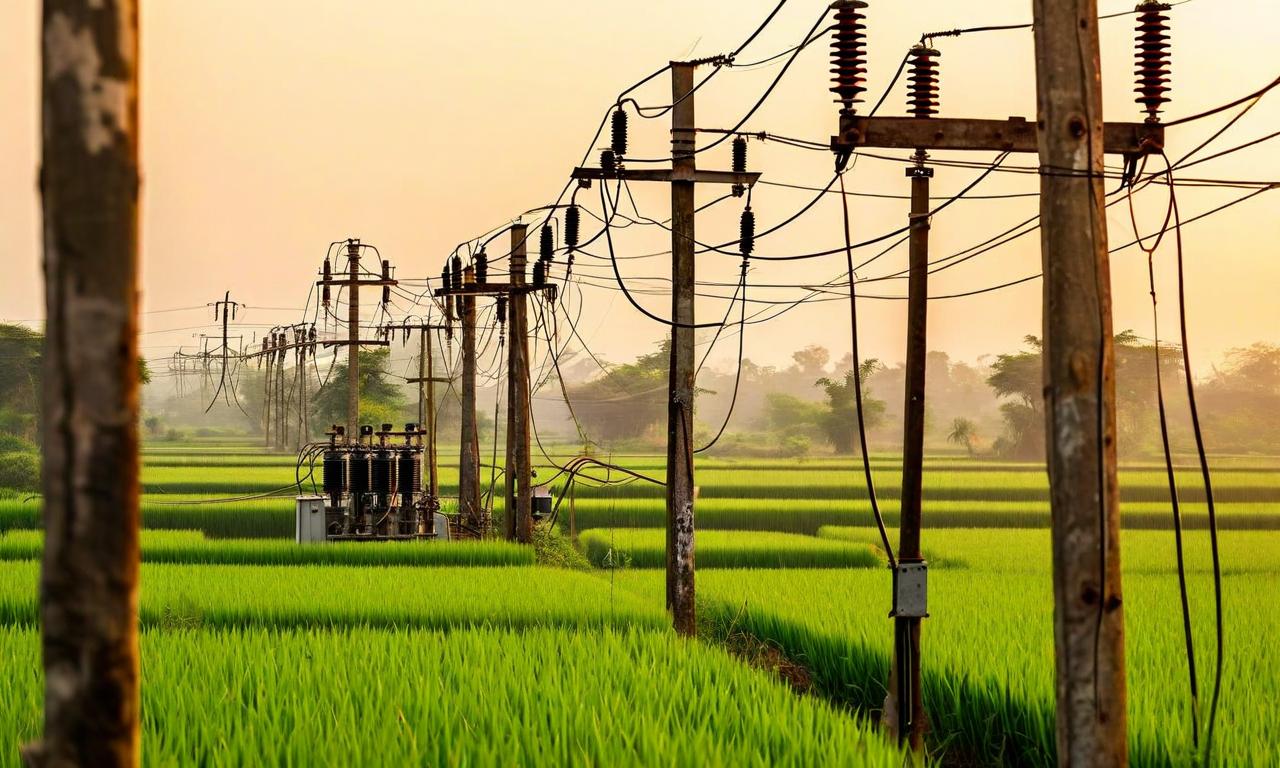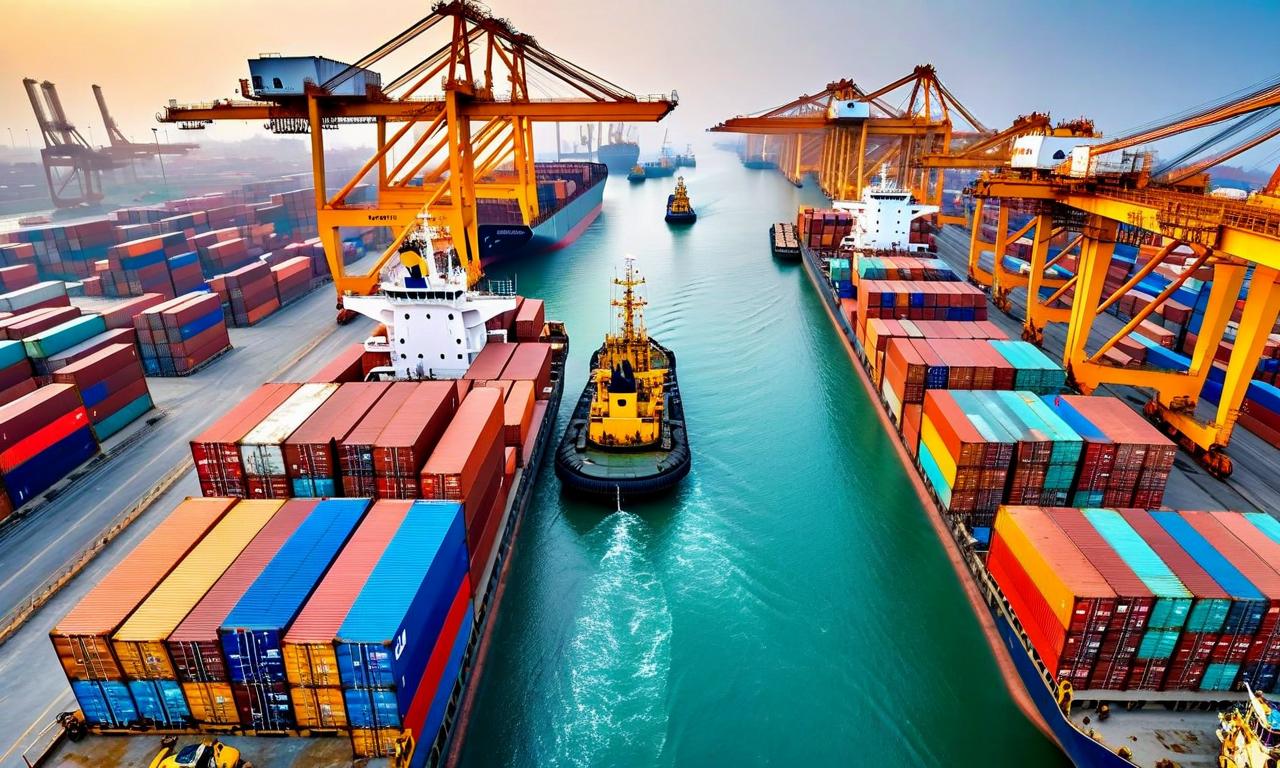Oil Marketing Companies Expected to Deliver Strong Quarterly Growth While Gas Utilities Face Margin Pressure Amid Global Oil Market Turbulence
U.S. sanctions on Russian oil giants have caused a surge in crude oil prices, with Brent reaching $65.45/barrel. This has led to supply disruptions as Chinese and Indian companies reduce Russian oil imports. Indian oil marketing companies expect significant EBITDA growth, while gas utilities face challenges. Reliance Industries projects strong performance in its oil-to-chemical segment. Citi forecasts Brent crude to average around $60 per barrel, with market attention on the upcoming OPEC+ meeting.

*this image is generated using AI for illustrative purposes only.
The global oil market is experiencing significant turbulence as U.S. sanctions on Russia's largest oil producers send shockwaves through the industry. This development has put Indian oil and gas companies in the spotlight, with potential implications for their operations and stock performance.
Crude Oil Price Surge
The sanctions targeting Russian oil giants Rosneft and Lukoil have triggered a substantial increase in crude oil prices:
| Crude Oil Type | Price | Weekly Gain |
|---|---|---|
| Brent Crude | $65.45/barrel | 7.00% |
| WTI Crude | $61.28/barrel | - |
This price surge is attributed to the sanctions affecting companies that account for over 5% of global oil output, given Russia's position as the world's second-largest crude producer.
Impact on Global Oil Supply
The sanctions have prompted immediate reactions from major oil consumers:
- Chinese state oil companies have temporarily suspended Russian crude purchases.
- Indian refiners are expected to significantly reduce their imports of Russian oil.
These moves could potentially reshape global oil trade flows and impact supply dynamics in the short to medium term.
Indian Oil Companies Performance Expectations
Amid this global turbulence, the oil and gas sector in India shows mixed performance expectations:
Oil Marketing Companies
Marketing companies are projected to see significant EBITDA growth year-on-year:
- BPCL: 92.00% growth
- HPCL: 127.00% growth
- IOCL: 191.00% growth
This growth is primarily driven by elevated marketing margins:
- Diesel margins jumped 39.00% year-on-year
- ATF margins rose 22.00%
- LPG margins increased 4.00%, though LPG operations still recorded losses of around ₹4,000 crore
Gas Utilities
Gas utilities are facing challenges:
- GAIL's EBITDA may decline 26.00% year-on-year due to lower transmission volumes and weaker trading spreads
- City gas distributors are experiencing margin pressure from rising feedstock costs:
- IGL: EBITDA projected to fall 9.00%, despite 5.00% volume growth
- MGL: EBITDA projected to fall 10.00%, despite 9.00% volume growth
- Gujarat Gas: EBITDA projected to fall 9.00%
Reliance Industries
Reliance's refining segment performed strongly despite moderation in petrochemical margins:
- Oil-to-chemical segment is projected to achieve ₹55,000-60,000 crore EBITDA
- 13.00-14.00% consolidated earnings growth expected
Market Outlook
Citi, a major financial institution, has provided its perspective on the oil market:
- Brent crude is expected to average around $60 per barrel.
- Market participants are keenly awaiting the upcoming OPEC+ meeting on November 2 for potential production adjustments.
This outlook suggests that while prices have surged, there's an expectation of some stabilization, though much depends on OPEC+'s decisions and the broader implications of the sanctions.
Conclusion
The oil market is at a critical juncture, with geopolitical tensions directly impacting global energy dynamics. Indian oil companies find themselves at the intersection of these global shifts, facing both challenges and opportunities. While oil marketing companies are expected to deliver strong quarterly growth, gas utilities are grappling with margin pressures. As the situation evolves, market participants will be closely watching for any changes in import strategies, pricing dynamics, and policy responses from key players in the global oil trade.





























